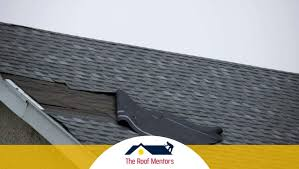
Roofs may not speak in words, but they communicate. Creaks, stains, and missing shingles are all signs your roof is trying to get your attention. And if you ignore those messages, the consequences often appear in places you don’t expect—like soaked ceilings, warped siding, or swollen window frames.
Whether you own a brand-new home or a decades-old property, spotting roofing issues early is one of the smartest things you can do to protect your investment. But to do that, you have to know what to look for.
Here are eight signs your roof is sending signals—and what you should do before they escalate into bigger problems.
1. Stains on Ceilings or Walls
If you notice yellow or brown patches forming on your ceiling or walls, it’s a red flag for moisture intrusion. Water travels unpredictably—it might enter from a hole 10 feet away from where you see the stain.
These spots often indicate:
- Leaking flashing
- Shingle failure
- Condensation buildup in the attic
A roof inspection can identify the source and determine whether a quick roof repair will fix it—or if broader damage has occurred underneath.
2. Granules in the Gutters
Those sand-like particles in your gutters aren’t just dirt—they’re likely granules from asphalt shingles. Granule loss is one of the earliest signs of shingle deterioration, especially after heavy storms or prolonged UV exposure.
When shingles lose their granules, they’re more vulnerable to cracking and heat damage.
Regular gutter cleaning is important, but noticing granule accumulation should prompt a deeper inspection from a qualified roofing company.
3. Sagging Rooflines
Your roof should have straight, even planes. If you notice a sag—or a subtle dip—it could indicate structural damage. Common causes include:
- Water-saturated decking
- Rotting sheathing
- Undersized or damaged rafters
These aren’t cosmetic issues—they’re signs of underlying weakness that can worsen quickly under snow or rain load. If sagging is present, don’t delay: schedule a roof inspection immediately.
4. Light Peeking into the Attic
During daylight hours, your attic should be dark. If you notice small rays of sunlight shining through the roof boards or vent openings, it usually means:
- There are gaps in the decking
- Nails or flashing have loosened
- Sealant has degraded
This is one of the easiest signs to check on your own—but often one of the most ignored. Any visible daylight means water, insects, or drafts can also get through.
5. Rising Energy Bills
Have your heating or cooling bills gone up unexpectedly? Your roof could be part of the problem.
Damaged roofing materials or poor attic ventilation can trap heat in summer or let warmth escape in winter. When insulation is wet or airflow is restricted, your HVAC system works harder to maintain temperature.
Fixing your roof won’t just stop water—it can lower energy usage and improve interior comfort.
6. Missing or Curling Shingles
Windstorms, hail, and aging cause shingles to:
- Curl upward at the edges
- Crack
- Detach completely
If even one shingle is missing, the protective system is compromised. Moisture can work its way into the underlayment, causing rot or leaks.
Roof repair in this case should happen promptly. AG Exterior Solutions frequently helps homeowners with minor shingle replacements that, when addressed early, prevent full roof replacement later on.
7. Mold or Mildew Near the Roofline
Mildew on siding or soffits may look like a ventilation issue—but it often begins at the roof.
Improperly drained gutters and roof runoff that flows back toward the structure promote mold growth. Water doesn’t always pour down neatly. It seeps, runs sideways, and saturates areas that weren’t designed to hold moisture.
If you notice mildew building up on your home’s exterior, it’s time to check:
- Gutter slopes
- Flashing condition
- Downspout drainage patterns
8. Age of the Roof
Even if there are no visible signs of trouble, the age of your roof is a clue.
Most asphalt shingle systems last 20–25 years. Metal roofing can last 40+ years, while wood shake and tile vary based on climate and maintenance.
If your roof is reaching its expected lifespan—and especially if you’ve had multiple minor repairs in the past few years—it may be time to start thinking about a roof replacement.
An experienced roofing company can help you evaluate whether you still have time left or if preemptive replacement will save money long-term.
What to Do When You Notice a Sign
Ignoring these signs won’t make them disappear. Roof issues almost always grow with time—and with that growth comes more invasive (and expensive) repairs.
Here’s a smart path to follow:
- Document what you see. Take photos of damage, water stains, or material shifts.
- Schedule a professional roof inspection. Let a pro assess your entire system—roofing surface, decking, flashing, gutters, and attic space.
- Take action based on findings. If minor repairs are needed, prioritize them. If replacement is recommended, get quotes and timeline expectations before emergency conditions arise.
AG Exterior Solutions: Listening to Roofs So You Don’t Have To
It’s easy to overlook subtle roof warnings. That’s why working with a knowledgeable roofing company is key. AG Exterior Solutions brings local expertise, material familiarity, and detail-oriented inspection practices that help homeowners stay ahead of damage—not behind it.
Whether it’s a loose shingle or a system near the end of its lifespan, catching issues early is the best protection you can offer your home—and your budget.